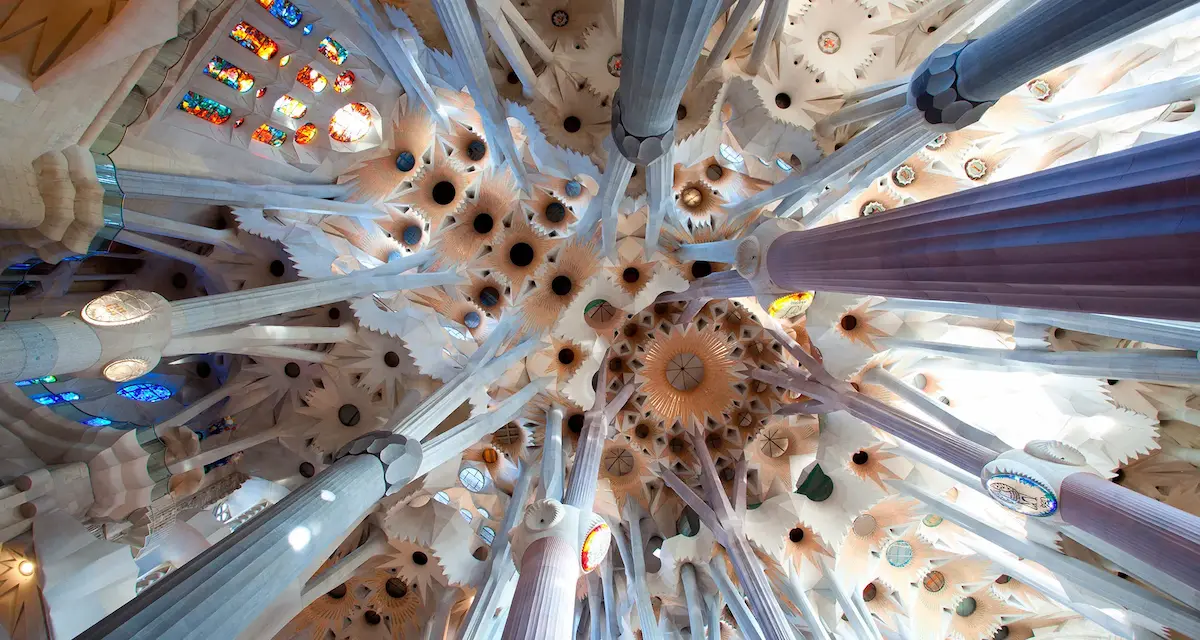
Gaudi's World Heritage in Barcelona
The famous architect Antonio Gaudí, author of the Expiatory Temple of the Sagrada Familia and symbol of the city of Barcelona, has in his work 7 monuments and buildings that have been declared World Heritage by UNESCO.
This is proof of the value of his work and the quality and originality of his work, which has given the city of today its own particular style. Six of these works can be found in Barcelona, and we summarize them below so that you don't miss them on your next visit. Take note!
1. The Sagrada Familia
If there is something that symbolizes the city of Barcelona, it is its largest and most modern temple: the Sagrada Familia. The greatest exponent of Catalan modernism and the architecture of Gaudí, the Sagrada Familia is his most important and colossal work.
It brings together the main and most important elements of his work. We emphasize the original use of geometric shapes typical of nature, such as the hyperbolic paraboloid, the hyperboloid or the helicoid.
Thus, Gaudí manages to fuse architecture, nature and religion in the most emblematic monument of Catalonia. A visit we recommend you make with one of the guided tours we offer and whose tickets to visit the Sagrada Familia can be purchased conveniently online.
2. The Güell Palace
The Güell Palace marked the beginning of the professional relationship between Count Güell, one of the most important industrialists of Catalonia in his time, and the architect Antonio Gaudí. The two met in 1878, during the Universal Exhibition in Paris.
Count Güell commissioned Gaudí to build a house that would connect with the one inherited from his father, located on the Rambla de los Capuchinos. Gaudí designed the new palace inspired by Hispanic and Oriental Islamic Art, creating a unique work.
3. The Park Güell
The Park Güell, one of Barcelona's must-see monuments, was initially conceived as a luxury residential complex commissioned by Count Güell in 1900. In it, Gaudí reflected his naturalist stage, drawing inspiration from the organic forms of nature.
Although it failed as a commercial project, the park became a public space after being acquired by the Barcelona City Council, and in 1984 it was declared a World Heritage Site by UNESCO.
4. The Casa Milà
Known as La Pedrera, this modernist house was designed by Gaudí between 1906 and 1910 for Pedro Milà y Camps. Its striking limestone and white tile facade evokes the effect of a snowy mountain, with details of religious inspiration.
The highlight of La Casa Milà is its rooftop, where Gaudí placed chimneys, ventilation towers, and stair exits with unique shapes, creating an open-air sculpture garden.
5. The Batlló House
Designed by Gaudí between 1904 and 1906, Casa Batlló is one of Barcelona's most original buildings. Its colorful, wavy facade, reminiscent of the waves of the Mediterranean, and its rooftop are examples of the architect's mastery in integrating art and nature.
6. The Vicens House
The Vicens House was the first major project undertaken by Gaudí after graduating as an architect in 1878. Designed as a summer residence for Manuel Vicens i Montaner, it stands out for its ceramic tile facade with floral motifs.
This building is a clear example of Gaudí's orientalist phase and was declared a World Heritage Site by UNESCO in 2005.